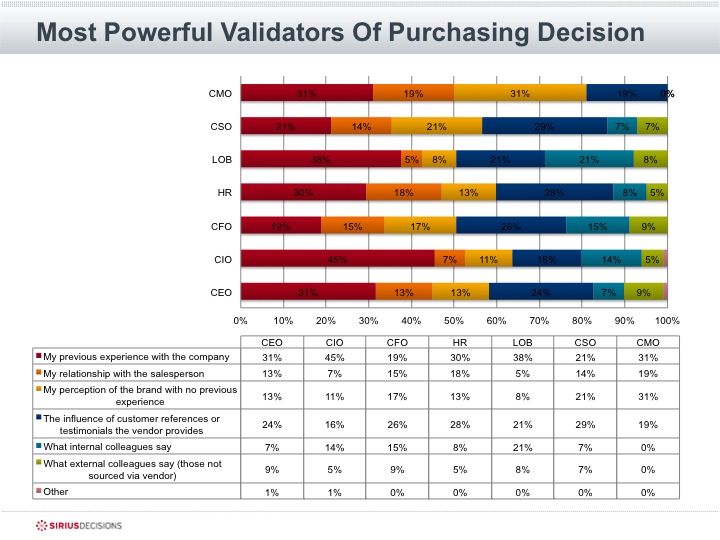How C-Level Executives Validate Their Vendor Choices
At the final stage, C-level executives are typically fully engaged and thus can make or break a deal. In our recent C-level buyer persona study, offering several bulleted potential responses from which to choose, we asked C-level executives some questions.
There are six stages in the SiriusDecisions Customer Buying Cycle. The final stage, “making the selection,” is the inflection point in the purchasing lifecycle when terms and conditions, contract negotiations and the implementation plan with the vendor of choice are all finalized. It’s the last checkpoint to ensure that the decision is the right one before final signoff by the key decisionmaker.
At this stage, C-level executives are typically fully engaged and thus can make or break a deal. In our recent C-level buyer persona study, offering several bulleted potential responses from which to choose, we asked C-level executives:
Which of the bullets carry the most weight when you are validating your decision to select one vendor vs. another?
The top response from these executives was that they validate their decision on a vendor based upon their previous experience with the company. This speaks volumes to the importance of customer experience, retention programs and the customer marketing function.
If you are not considering the customer experience post-sale and how to keep your customer’s journey both positive and productive, then you’re not thinking long-term. It’s paramount that your existing customer base is a solid foundation for future growth; pay special attention to customer onboarding, training, communications, user conferences, customer advisory boards and satisfaction metrics.
Our survey revealed that the second most common way that C-level executives validate vendor selection is through customer references and testimonials provided by the vendor.
SiriusDecisions recommends that your product and solution marketing efforts include a strong focus on building stories and quantitative proof points demonstrating that your offerings will deliver on their promise. Customer reference programs, tools and dedicating resources to manage an internal network of customer references for your sellers to tap into during this late stage of the buying process are key. Working with corporate marketing or your company’s sales enablement function, ensure that a customer reference database integrated with your sales force automation tool is in place to enable this critical tactic for late-stage buying success.
Refer to the accompanying chart for more details concerning results of the survey question about final vendor selection validators by C-level executives.
